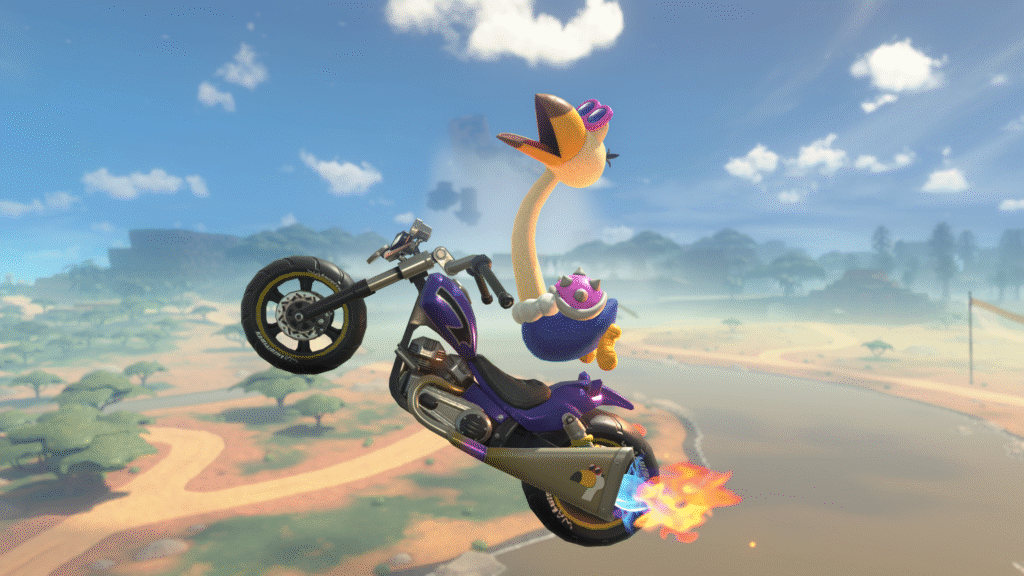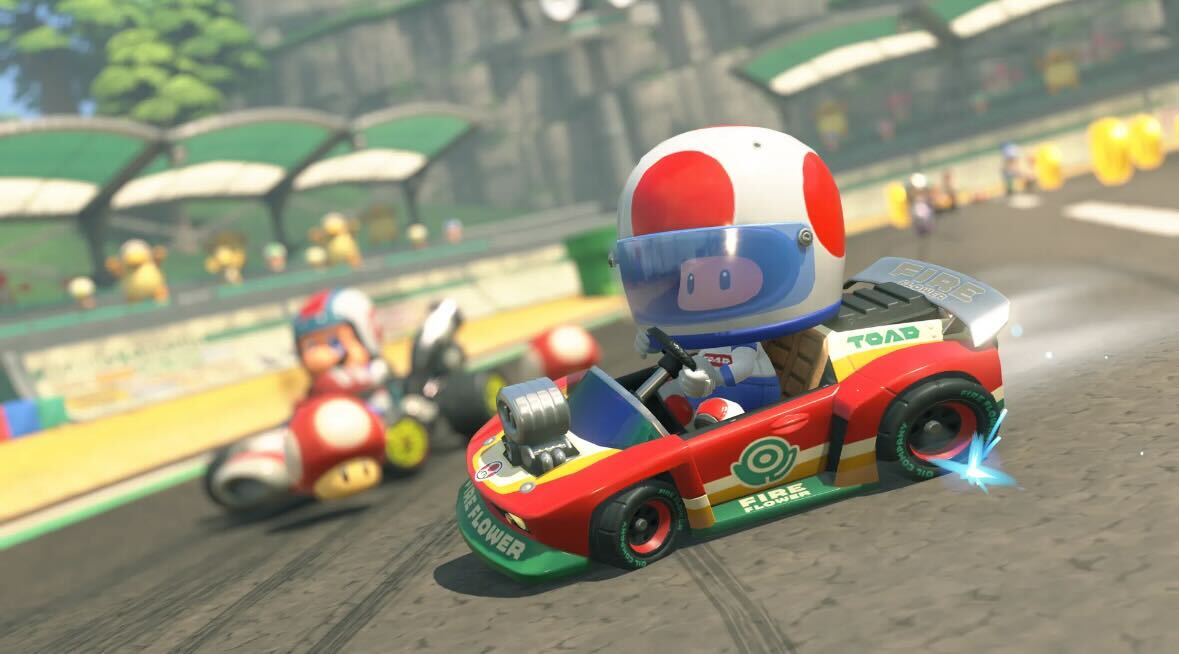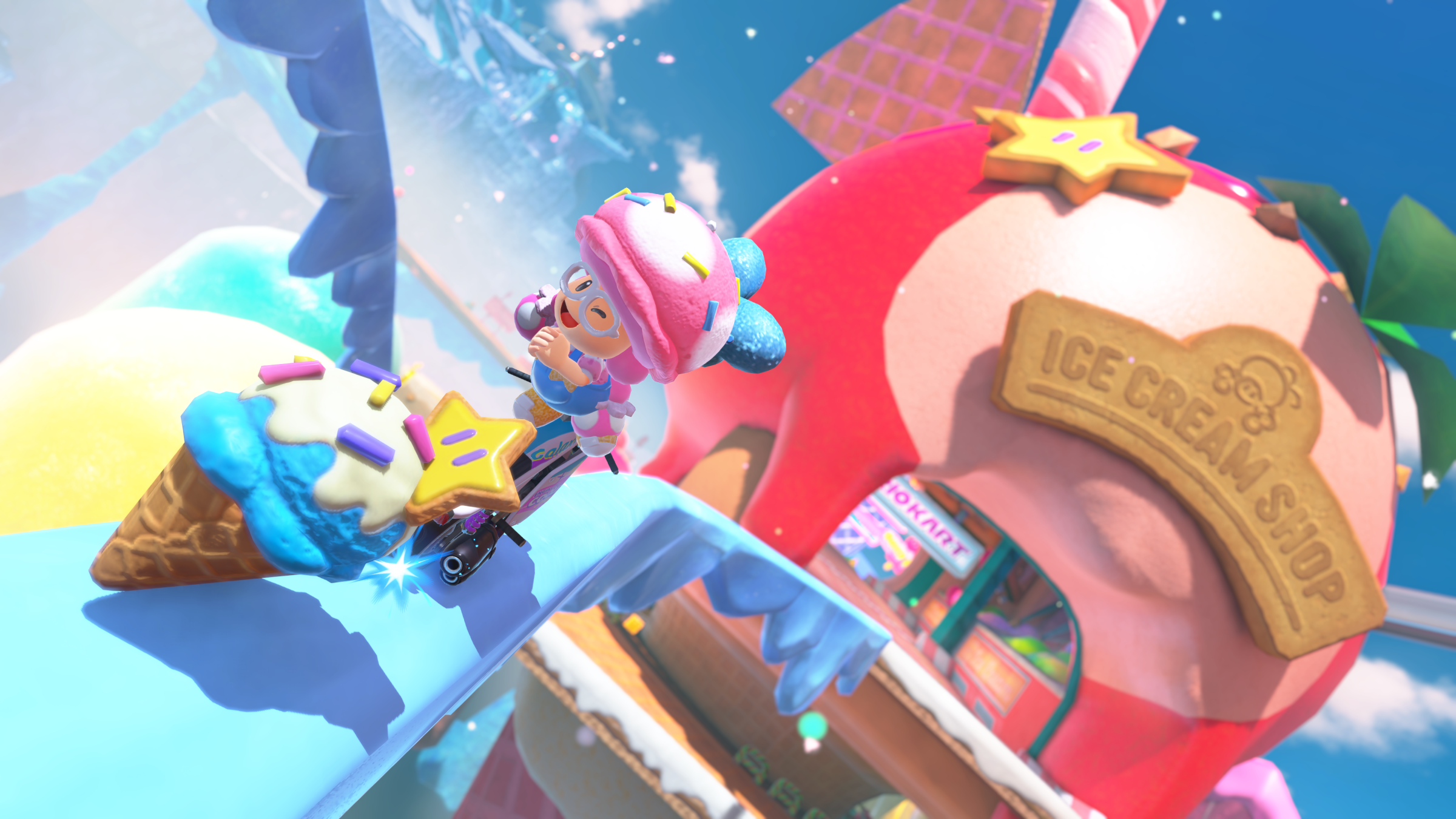From the very beginning, the goal for Mario Kart World was ambitious. A follow-up to the Switch’s (and Wii U’s) best-selling game, one that steadily grew over the years, World’s original concept focused on two key changes: doubling the amount of racers, and creating a connected, open world for players to explore. It was so big that, early on in development for the original Switch, the team was having a hard time making it work on the hardware, and eventually it shifted to become the main launch title for the more powerful Switch 2.
But even outside of technical issues, those changes meant a fundamental rethink of many of Mario Kart’s core elements. “We knew when we came up with this idea that it really would be a big change for the series,” says producer Kosuke Yabuki, “but we had no idea at the time how many people, how much time, and how much effort that would require to actually achieve it.”
The most obvious change is right there in the title: it’s the world. Instead of a series of individual racetracks, all of Mario Kart World’s courses take place on the same landmass, connected by a series of routes. The game isn’t set in an existing version of the Mushroom Kingdom, but instead a brand-new location that has been designed from the ground-up around the idea of racing.
“As you travel through this world, you will see things that remind you of the Mushroom Kingdom,” Yabuki explains. “Elements like the question mark blocks or warp pipes. In terms of world design, I would say this world was designed for Mario Kart World. If you look at the height of a mountain, or the length of a desert, those were all things that we decided specifically for this title.”
According to Yabuki – who previously worked on both Mario Kart 7 and 8, and served as producer on the Switch fighter Arms – unlike many open worlds, the game wasn’t designed to be a recreation of a realistic or believable place. He says that “we have to think about not simply recreating real-world patterns in terms of a town or an island. Rather, this world exists purely to make Mario Kart more fun.”
Building the world wasn’t difficult purely because it was larger than past games, but also because of that connected nature. As Yabuki explains it, when one element of the world was changed, it had a cascading effect that could impact other parts of the world as well. “If you change the height of a mountain you have to think about whether you’ve diminished its usefulness in the surrounding areas as a landmark, for example,” Yabuki says. “This means that in the end terrain design is actually quite a difficult task, because if you change one thing, you have to adjust many more.”
This influenced the way the race tracks themselves were designed. In previous Mario Kart games, the developers had more control over how players were able to view the courses, because they were racing along pre-defined roads and paths. But that’s no longer the case.
“You used to be designing courses with the notion that people are going to drive and look in a very few fixed directions that we know ahead of time,” Yabuki says, “compared to Mario Kart World, where people might enter a course from anywhere, or leave that course from anywhere, and continue driving. So we have to think about those entry and exit points, and how they affect the player’s vantage. In that sense, Mario Kart World course design is quite a bit more work compared to previous games.”
What is on Toad’s head?
“When it comes to Toad, there really are a lot of secrets about this character, and I have to say not all of them are mine to share,” Yabuki told me. “But I would like for you, when you play the game, to consider when Toad is wearing a helmet, sometimes he’ll have that transform and you’ll see suddenly it’s a hamburger. So I want you to think about that moment and what your personal theory about Toad’s head might be.”
The expansiveness similarly had an impact on the game’s structure. For one thing, it inspired an all-new mode called Knockout Tour, where players are racing across the entire continent, while their numbers steadily dwindle, sort of like a Mario Kart take on battle royale. It also introduced a notable change for the classic Grand Prix mode, as now players have to drive to their next race, instead of being automatically transported. Yabuki says that one of the inspirations behind this change was the concept of kishōtenketsu, a four-part story structure used for everything from poetry to comic strips.
“First you introduce an idea, you let it develop, then you have a turn, and then you have a conclusion,” Yabuki says of the structure. “We tried to follow that kind of thinking. The start of the Grand Prix is that first frame of a four-panel comic, for example, and you’re going to have moments along the way as you develop, and then you have a turn, and a conclusion. In order to allow those moments to breathe, you have to think about the difficulty of each step. So when you’re driving from one course to the next, you have more freedom, there’s a little bit more latitude, and it’s purposefully not as difficult, to give some variation in that pace so that the feeling can develop.”
It’s not just the world that has gotten bigger, but the number of participating racers as well. World has doubled the number per race from 12 to 24. It wasn’t as simple as adding more players, as the additional racers created balance issues with multiple elements of the game, which Yabuki says forced the development team to “reconsider all elements from their fundamentals” in order to accommodate everyone. “We had to consider as varied elements as the road width, the kart size, or even things like when a player is hit by a shell, how much speed do they lose? How much speed do they lose with other types of collisions? All of these things had to be considered from scratch to balance,” he explains.
One thing that hasn’t changed is just how weird the game can be. Recent Mario adventures have taken a turn for the surreal, but strangeness has always been a part of the franchise’s DNA. This is, after all, a game where eating mushrooms and flowers gives you superpowers, and the new Mario Kart lets you race as everything from a cow to a Goomba. So when Yabuki was trying to convince the team on one of World’s more out-there ideas — that eating food at a diner gives your character a whole new look — he was able to point back to some of the older Mario titles.
“We’ve always had some really interesting and weird precedents that we could draw from,” he says. “When I was trying to explain the concept of eating something and having a costume change, sometimes in order to persuade them I would say ‘look, it’s the sort of thing we used to do.’”
Content shared from www.theverge.com.



